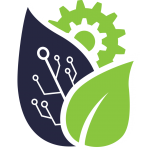Renewably Powered Water Treatment (Archived)
Food & Water Security
The potential synergy between wastewater recycling and renewable energy is well recognized. At high penetrations, the intermittency of renewable energy limits grid integration, though the impact of high renewable energy penetration on grid health can be alleviated by expensive energy storage. To subvert this expense, a system could conceivably make use of available energy to produce some beneficial output during peak energy production, and scale back production during periods of low incident energy. Our project applies this methodology to water treatment, operating high energy-demand treatment steps including reverse osmosis and ultraviolet disinfection as available energy allows, and maintaining the quality of the treated water during periods of limited power availability. Furthermore, in communities around the world without stable electricity, centralized water treatment is infeasible.
This project will analyze the practicality of distributed renewable energy wastewater recycling on a small scale with considerations for scalability. We will first design and build a test bed system that incorporates post-flocculation secondary-to-potable treatments steps with the goal of providing enough daily throughput to satisfy the needs of a family of four. This prototype will help us gain insight into:
- system scaling relative to power system capacity given the varying availability of energy
- energy consumption versus reverse osmosis wastewater recovery ratio
- financial comparison estimating the dollars and carbon savings by storing treated wastewater instead of storing electrical energy in batteries.
Our goal is to create a scalable, self-contained water treatment system powered entirely by renewable energy that utilizes machine learning to optimize system efficiency given the availability of 'must run' power with the aim of being able to grid-tie or run independently as a microgrid.This proof-of-concept is powered by photovoltaic panels, regulated by an onboard microcontroller, and uses UV LEDs during the sterilization step, a more environmentally friendly UV source than anything currently in use. Ultimately, we aim to create a system capable of providing potable water to both off grid homes and small rural communities.


